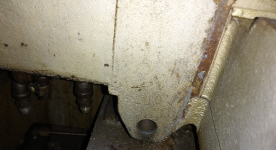The things you mentioned to remove the long travel section, could be photoed so other will know how/what to remove.
The chuck top surface finish is not as important as absolutely cool grinding.
often a 30-36-and 46 open grit wheel will be used (perhaps a 54) for chuck grinding.
I am an experienced grinder hand so I use a 46I very open wheel. Chucks can be ground dry, but doing so is a huge chance of heat swelling and burning the chuck.
Wet is best even if using a hand spray bottle.
Many guys burn the first chuck grinding by letting it get hot to swell up and suck into the wheel.
best to grind with very small down feeds, frequent sprays, over-travel at the off ends, pause and rest, feeling the chuck for warmth. I use small cross-feeds. lately, I see guys making big cross-feeds perhaps Ok but I think that is taking a chance to burn a chuck. I have groungd chucks that had a .015 low area..a real bugger t grind...Over-tightened chucks can actually bend the top table losing the flatness of the bed way contact.
Here is a good chuck-grinding video.









